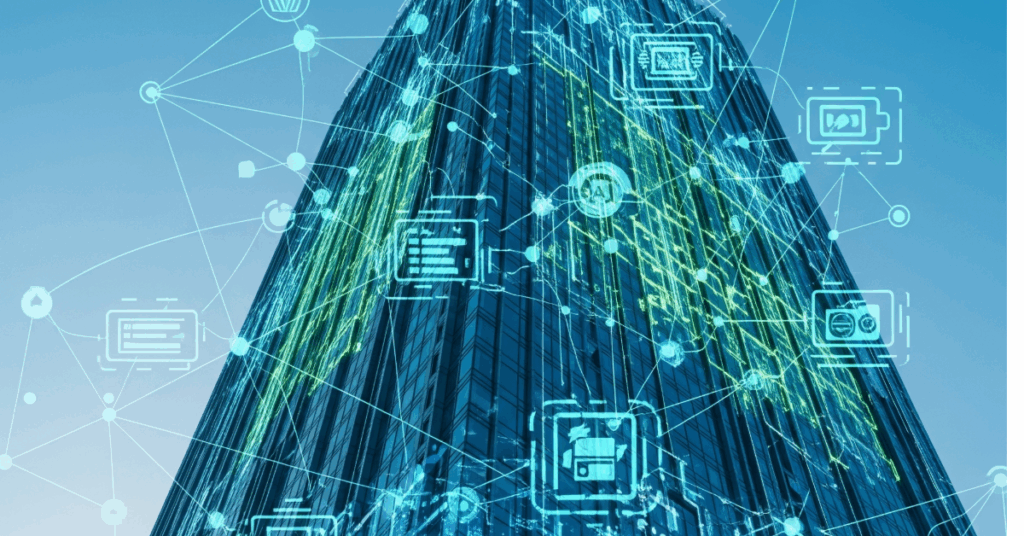The past year has been nothing short of transformative for the journey toward smarter buildings. What began as a more narrowly focused effort, the Coalition for Smarter Buildings (C4SB), has evolved into a significant player within the Linux Foundation, navigating exciting new technological challenges and opportunities. This move marks a pivotal shift, expanding the initiative’s charter and accelerating progress in redefining the industry. June 30th MondayLive!
The Evolution of the Coalition for Smarter Buildings (C4SB)
A year ago, C4SB was primarily focused on identifying and addressing specific technical barriers. Key areas of focus included:
- 2525: A vision for creating a dedicated space for specifications.
- TXO (Total Cost of Ownership/Everything): Emphasizing the importance of context in digitalization.
- IBB (Intelligent Building Box): An early concept for a cloud-native device within buildings.
These initiatives garnered significant attention, eventually catching the eye of the Linux Foundation. This led to a crucial conversation about scaling these efforts into a community-driven movement aimed at redefining the industry. The alignment with the Linux Foundation’s agenda, focused on driving innovation, speed, interoperability, and cost reduction through open-source software deployment, solidified this strategic move. Embracing the “Linux way” of convening – with its philosophies of open source, sharing, and contribution – represents a new, exciting, and highly effective approach for C4SB, now operating as C4SBF (Coalition for Smarter Buildings Foundation).
A notable recent success demonstrating this expanded approach is the Tiger Team initiative. This collaboration between C4SBF and NIST brought together experts in semantics and ontologies to explore harmonization. The initial success of the Tiger Team is expected to lead to multiple working groups focused on achieving interoperability through semantics and ontologies. This exemplifies the broader impact C4SBF aims to have across the entire building lifecycle, from design and construction to operations, maintenance, and asset management.
The Integrated Building Backbone (IBB) System: A Cloud-Native Vision
The concept of the Intelligent Building Box (IBB) has undergone a significant evolution over the past year. Initially conceived as a gateway device between the building and the cloud (the “IBB Host”), it became clear that this cloud-native behavior needed to extend across the entire building ecosystem. This led to the development of the IBB System, encompassing:
- IBB Host: The core device making the building cloud-native.
- IBB Cloud/Enterprise: Extending cloud-native functionality and interoperability to cloud-based applications.
- IBB Edge: Bringing connectivity and cloud-native behavior closer to the input/output (IO) level at the very edge of the network.
This shift in thinking transforms IBB from a discrete item into a comprehensive system where a single “IBB App” can seamlessly operate across the host, edge, or enterprise layers. This aspirational architecture, detailed in a newly released 16-page paper, sets a high bar for security, interoperability, and the breakdown of traditional data silos in smart buildings. It serves as a foundational vision for how future building products and solutions will need to evolve, aligning with critical IT principles like cloud-nativity and addressing industry demands for open systems, no vendor lock-in, and preparedness for AI integration.
Key Industry Shifts and Opportunities
The past year has also highlighted several crucial shifts and opportunities within the industry:
- Accelerated Cloud Adoption: A dramatic change in perception has seen the building controls industry move from resisting cloud connectivity to actively embracing it. This reflects a broader industry trend where cloud solutions are becoming the norm, facilitating smoother integration and access for third-party vendors.
- Overcoming Interoperability Challenges: The fundamental issue of interoperability across diverse operational technology (OT) domains remains a key focus. The expanded scope and critical mass of experts within C4SBF, particularly through initiatives like the semantic Tiger Team, are making significant strides in addressing this complex challenge.
- Prioritizing Retrofit Solutions: With a projected slowdown in new ground-up construction, the industry’s focus is shifting towards retrofitting existing buildings. Solutions developed within the smart building community must be applicable and scalable for these retrofit scenarios to drive widespread adoption.
- Addressing the Capital Crunch: The current economic climate, marked by high equity investor expectations and elevated interest rates, is impacting construction. It’s crucial for the smart building industry to demonstrate the clear return on investment (ROI) and financial benefits of implementing smart building technologies to attract necessary capital from institutional clients, owners, and REITs.
- The “Crisis as Opportunity” Mindset: The current challenges in construction and real estate present a unique opportunity to implement transformative changes that might have previously seemed impossible. This includes rethinking construction methodologies, facility management, property management, and asset management to create more agile and efficient built environments.
Looking Ahead: Driving Adoption and Impact
The discussions underscore a collective understanding that while significant progress has been made, the journey is far from over. The focus now shifts from conceptualization to execution, with an emphasis on:
- Baking in Requirements: Ensuring that smart building requirements are integrated into agreement documents for architects, engineers, general contractors, and subcontractors from the outset of new construction projects.
- Demonstrating Real-World Use Cases: Providing concrete examples and case studies of successful implementations to illustrate how these new concepts and technologies work in practice.
- Educating Stakeholders: Continuously communicating the benefits and applicability of these solutions, particularly for retrofit projects and to a broader audience of owners and financial stakeholders.
- Embracing Open Collaboration: Continuing to foster the spirit of open source and open standards to accelerate innovation and ensure widespread industry adoption.
The smart building industry is at a pivotal moment. By embracing collaboration, prioritizing cloud-native solutions, and showcasing tangible value, we’re clearly charting a course toward genuinely intelligent and sustainable buildings. Have a great summer! MondayLive! will return Sept 08, 2025 Join the discussion



